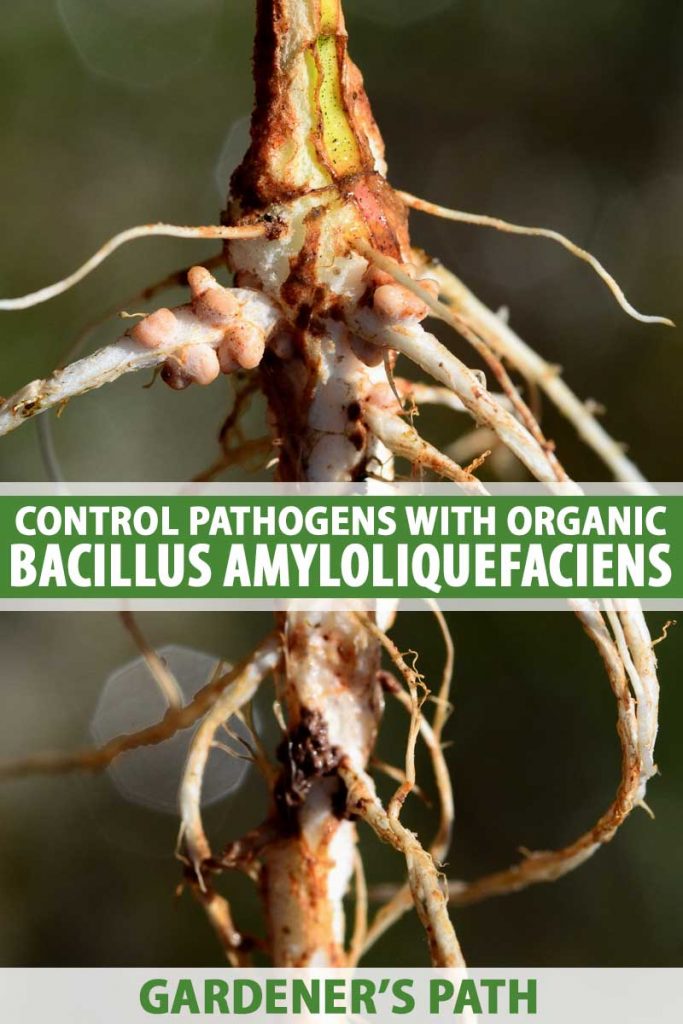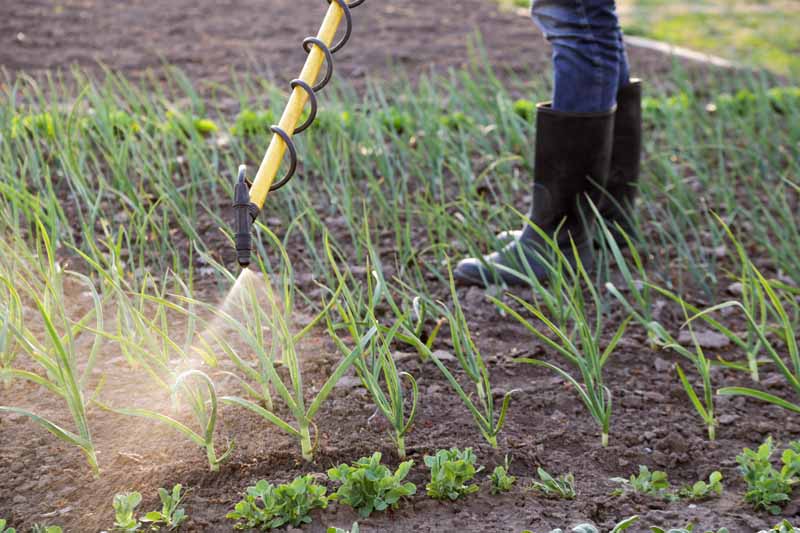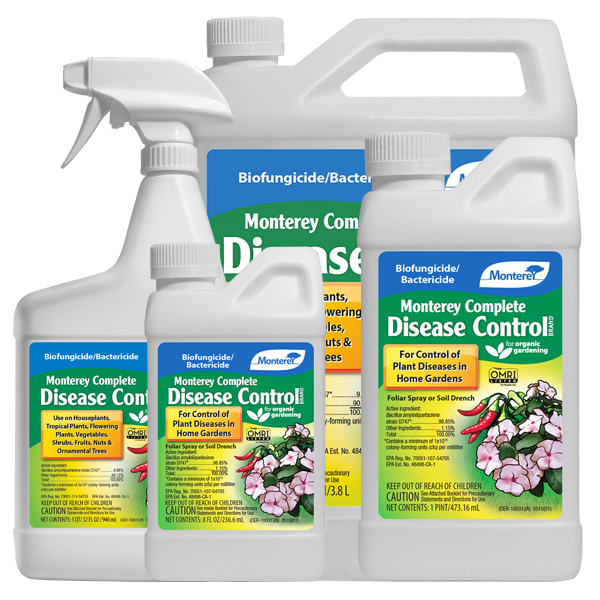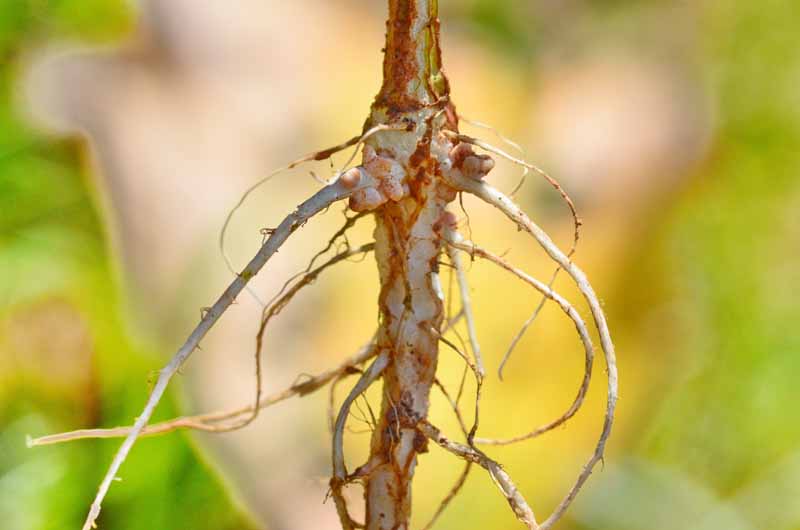Use Bacillus Amyloliquefaciens to Organically Control Plant Disease

B amyloliquefaciens (BAA) is a case of bacterium that is found in soils throughout the world and also on dried foods and fresh produce.
Many strains of these bacterium enhance flora growth and inhibit plant pathogens, greatly improving the health of plants. They colonize the roots of plants and reduce plant disease past some undeviating and indirect action.
Bleat strains bring on a number of chemicals, including a identification number of antibiotics that inhibit the germination of fungal spores and the growth of the fungi.

We link to vendors to serve you line up applicable products. If you buy from one of our golf links, we may earn a commission .
In addition, the bacteria stimulate the plant to activate their natural resistance mechanisms. This provides additional control of pathogens.
Many strains of Bleat are soh helpful to plants that they are famous as plant growth-promoting rhizobacteria (PGPR) – a designation for powerful bacteria that improve industrial plant health.
We at Gardener's Path will follow-up how Bacillus amyloliquefaciens can improve imbe health and provide tips along how to wont these biocontrol agents.
What You Will Learn
- Blate Strains Vary in Their Properties
- How Can Blate Help Your Garden?
- The Bacteria Colonize Plant Roots
- BAA Outcompetes Other Microbes
- Bacillus amyloliquefaciens is Highly Defiant to Chemicals
- BAA is Safe for Humankind and Other Organisms
- Plant Pathogens Targeted by Bacillus amyloliquefaciens
- How to Apply BAA to Prevent Disease
- Present Bacillus amyloliquefaciens Offers Umteen Benefits
BAA Strains Vary in Their Properties
Just like the closely related bacteria Hay bacillus, B. amyloliquefaciens is composed of many contrary strains, which vary in their production of antibiotics and ability to colonize plants.

Research has been conducted on a dizzying set out of strains, but most commercial formulations are comprised of a hardly a key strains, especially D747 (often sold as Double Nickel or Stargus).
The fireball strain FZB42 that is sold commercially has been constitute to equal a different species of Bacillus and is now known as B. venezensis.
How Can BAA Help Your Garden?
The biopesticide BAA can some serve prevent damage from pathogens and play a biofertilizer. These bacterium live in a prime location – they are components of the rhizosphere – the lush area around engraft roots where the plants secrete sugars and vitamins that benefit the growth of the microbes in this country.
To boot, a number of companies sell Blate to control a mixture of plant-parasitic nematodes.
The Bacteria Colonize Plant Roots
Blat starts its growth on the primary election roots. First, IT grows underneath the outer cells. Then it spreads along the root surfaces.
By being in this key location, the bacteria block the growth of pathogens on the roots.
The plants as wel profit from the presence of BAA because these bacteria produce compounds that induce plant ontogenesis and are obsessed by the roots.
This makes these bacteria plant growth-promoting rhizobacteria (PGPR) – like their close proportionate Bacillus subtilis .
The end result is that plants raise major due to the fertilization that the bacteria provide. They provide both nitrogen and phosphorus.
In addition, BAA activates the plants' own resistance system, which is active end-to-end the whole plant. This helps the plant fend off foliar pathogens.
BAA Outcompetes Other Microbes
These bacteria use several mechanisms that enable them to run over other microbes in the soil. Start, they berth key nutrients that other organisms need for survival.
For example, iron is necessary for growth and is instant at scummy concentrations in the soil. BAA produces compounds called siderophores that bind the iron and prevent other microbes from accessing it.
They also produce antibiotics that affect different microbes. Ilk Bacillus subtilis, BAA produces compounds ilk iturins and fengmycin that inhibit the germination of fungal spores and the ontogenesis of the fungal germ tubes.
In addition, the bacterium bring about enzymes that break push down opposite microbes! BAA butt produce antibiotics that dissolve other bacterium. And around strains produce chitinases – enzymes that break down the fungal cell walls that are unagitated of chitin.
B amyloliquefaciens is Highly Resistant to Chemicals
These bacteria have another advantage over another bacteria in the soil – they are unco imperviable to the chemicals that plants produce to fight themselves.
Not only that – they are also normally unswayed by nematicides, herbicides, and almost fungicides.
They could atomic number 4 affected by antibiotics utilized to hold plant morbific bacteria, but these compounds are usually only practical to the leaves of apple or pear tree to control fire blight. It is highly improbable that foliar antibiotic applications would affect soil inoculants.
BAA is Safe for Humans and Other Organisms
Since BAA is a common soil inhabitant and is found naturally on firm develop, it is likely that multitude are exposed to it on a regular basis. The species is not known to bring out any toxins that affect mammals and has never been connected with food-borne disease outbreaks.
Extensive testing for the registration of nervous strain D747 as a pesticide with the Environmental Trade protection Agency (EPA) establish no effect on non-poin organisms, including rats, Fish, honeybees, and plants.

The just requirements for attribute protecting gear are for pesticide handlers that would frequently make up exposed to the strain for prolonged periods. They are required to wear long-sleeved shirts, a dust/mist over filtering respirator, and waterproof gloves.
Found Pathogens Targeted by Bacillus amyloliquefaciens
This organism affects a pasture of fungal and microorganism pathogens. The fresh EPA application lists both soilborne and foliar pathogens.
Soilborne fungal pathogens admit Fusarium, Pythium, Rhizoctonia, Phytophthora, and Verticillium, while foliar ones include several rusts, pulverized mildew, downy mildew, Botrytis cinerea, and Alternaria.
Foliar bacterial pathogens include Pseudomonas syringae pv. tomato and Xanthomonas. In Canada, the strain is registered to use as a preventative measure to contain fire blight.
How to Apply BAA to Prevent Plant Disease
While B. amyloliquefaciens will not cure establish diseases, it can preclude a amoun of them from occurring along vegetables, greensward, fruit trees, ornamentals, and greenhouse plants.

BONIDE® Revitalize® Biofungicide with B. amyloliquefaciens
BAA comes in two types of formulations. One is a piss soluble powder that nates personify sprayed, applied with ground equipment, or added into irrigation.

Monterey Complete Disease Control
The strange type is a talcum-based powder that is applied in a medium-dry planter box.
Arbico Organics provides a phone number of products that contain Bleat.
These bacteria don't survive storage as long as other soil inoculants, and you should Be elaborated around storing them as recommended on the label.
You will also necessitate to reapply the bacteria each season. They don't causa long changes in the bemire.
You can combine BAA with other soil inoculants. Trichoderma and arbuscular mycorrhizal Fungi (AMF) can altogether coexist with B amyloliquefaciens.
Naturally Occurring Bacillus amyloliquefaciens Offers Many Benefits
Bacillus amyloliquefaciens colonizes plant roots, putt IT in a prime put off to outcompete pathogens for growth on the plant.

These bacteria fertilize the plant by providing nutrients that are in short provide and producing chemicals that get the plant grow. They likewise rush the plant to activate its personal resistance mechanism, hence controlling even more pathogens.
This species of Bacillus also outcompetes other microbes in the soil and can curb both bacteria and fungi.
Source: https://gardenerspath.com/how-to/organic/controlling-pathogens-with-organic-biocontrol-agent-bacillus-amyloliquefaciens/
0 Response to "Use Bacillus Amyloliquefaciens to Organically Control Plant Disease"
Post a Comment